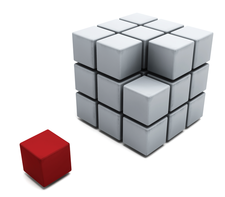Data backup for individual hosts
Going Solo

© Lead Image © Kirsty Pargeter, Fotolia.com
Sometimes you just need to back up a few directories on a computer, not administer a distributed installation or an array of disks. Areca Backup gives you hassle-free backups of individual hard drives.
Creating a safe copy of a few directories is governed by laws different from those that apply to backing up complete data centers. The tools need to be especially easy to use, without complicated configuration files or deeply nested menus. The usual space-saving techniques, such as incremental backups, should be available. Pre-and post-backup scripts should be able to stop applications like databases during the backup. Several backup versions need to be archived, and encryption and compression would not be bad.
The backup should be capable of restoring to different hardware; but, for the sake of simplicity, it would be preferable not to store the data in a proprietary format, which would necessitate reinstalling the operating system and backup software in the case of disaster. LVM or RAID configurations should not be an obstacle. File permissions need to remain intact, and the backup should not trip over links or named pipes. Finally, you should also be able to check easily whether everything went as desired.
Treat
One open source tool that satisfies all these requirements is Areca Backup [1]. Beyond the features already listed, Areca has a few more treats to offer. For example, you can include or exclude source files in or from the backup and filter by various criteria. Constructs with AND, OR, and NOT are allowed. Backups can be simulated, so that you can estimate in advance what would reach the backup disk, and to what extent, with the given settings.
[...]
Buy this article as PDF
(incl. VAT)
Buy Linux Magazine
Subscribe to our Linux Newsletters
Find Linux and Open Source Jobs
Subscribe to our ADMIN Newsletters
Support Our Work
Linux Magazine content is made possible with support from readers like you. Please consider contributing when you’ve found an article to be beneficial.

News
-
Parrot OS Switches to KDE Plasma Desktop
Yet another distro is making the move to the KDE Plasma desktop.
-
TUXEDO Announces Gemini 17
TUXEDO Computers has released the fourth generation of its Gemini laptop with plenty of updates.
-
Two New Distros Adopt Enlightenment
MX Moksha and AV Linux 25 join ranks with Bodhi Linux and embrace the Enlightenment desktop.
-
Solus Linux 4.8 Removes Python 2
Solus Linux 4.8 has been released with the latest Linux kernel, updated desktops, and a key removal.
-
Zorin OS 18 Hits over a Million Downloads
If you doubt Linux isn't gaining popularity, you only have to look at Zorin OS's download numbers.
-
TUXEDO Computers Scraps Snapdragon X1E-Based Laptop
Due to issues with a Snapdragon CPU, TUXEDO Computers has cancelled its plans to release a laptop based on this elite hardware.
-
Debian Unleashes Debian Libre Live
Debian Libre Live keeps your machine free of proprietary software.
-
Valve Announces Pending Release of Steam Machine
Shout it to the heavens: Steam Machine, powered by Linux, is set to arrive in 2026.
-
Happy Birthday, ADMIN Magazine!
ADMIN is celebrating its 15th anniversary with issue #90.
-
Another Linux Malware Discovered
Russian hackers use Hyper-V to hide malware within Linux virtual machines.

